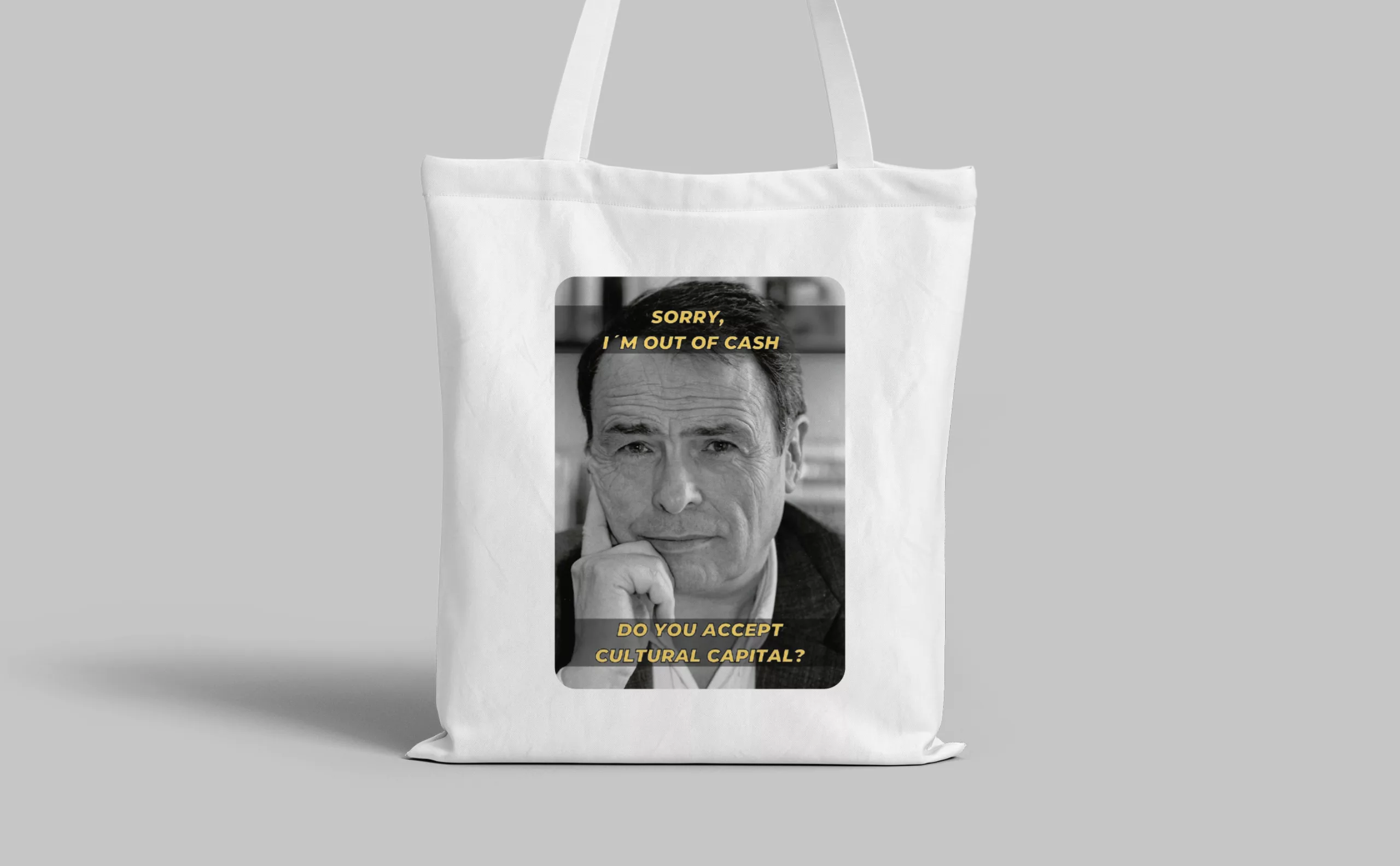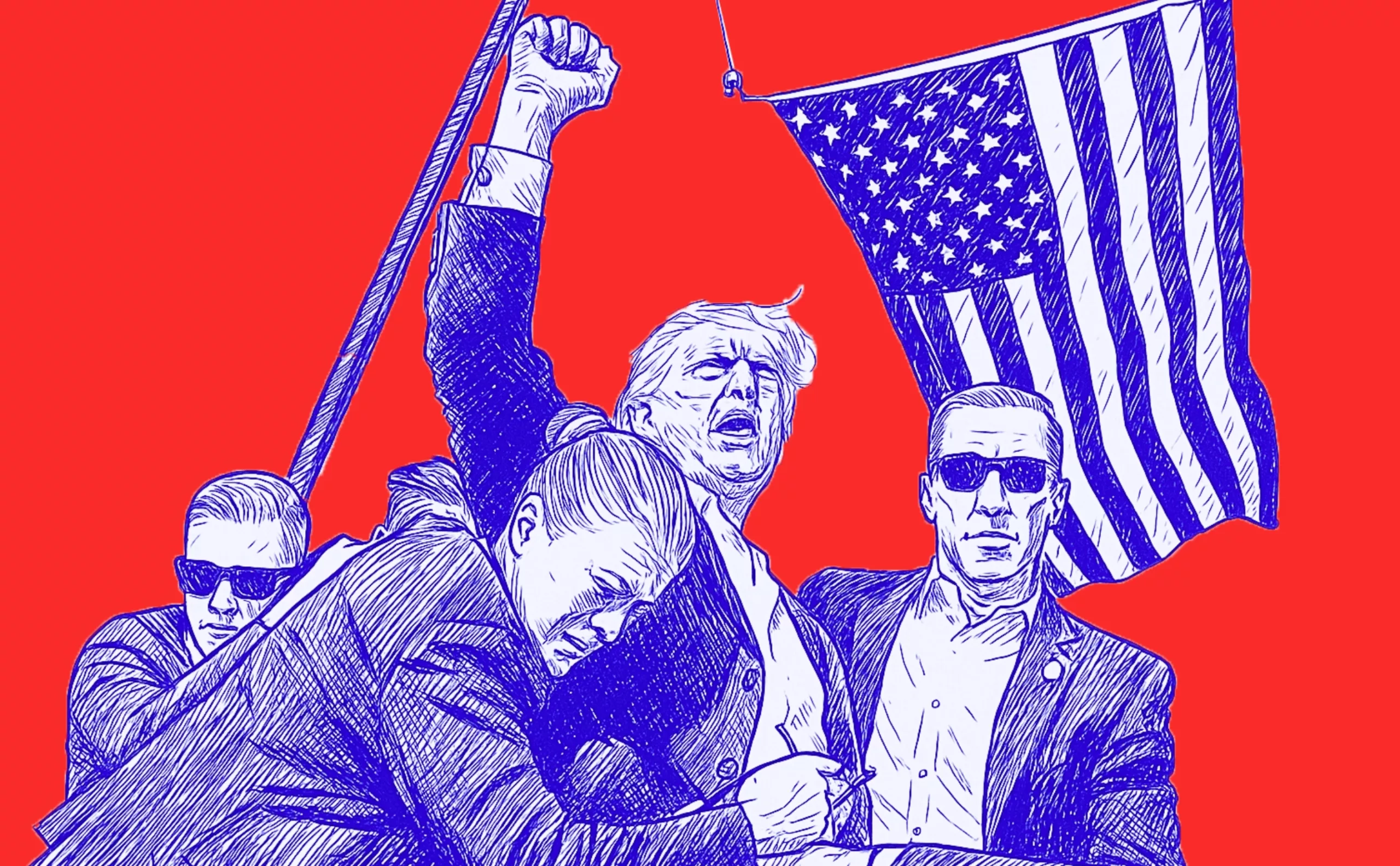Uncle Bens’, Aunt Jemima… racist packaging rises up
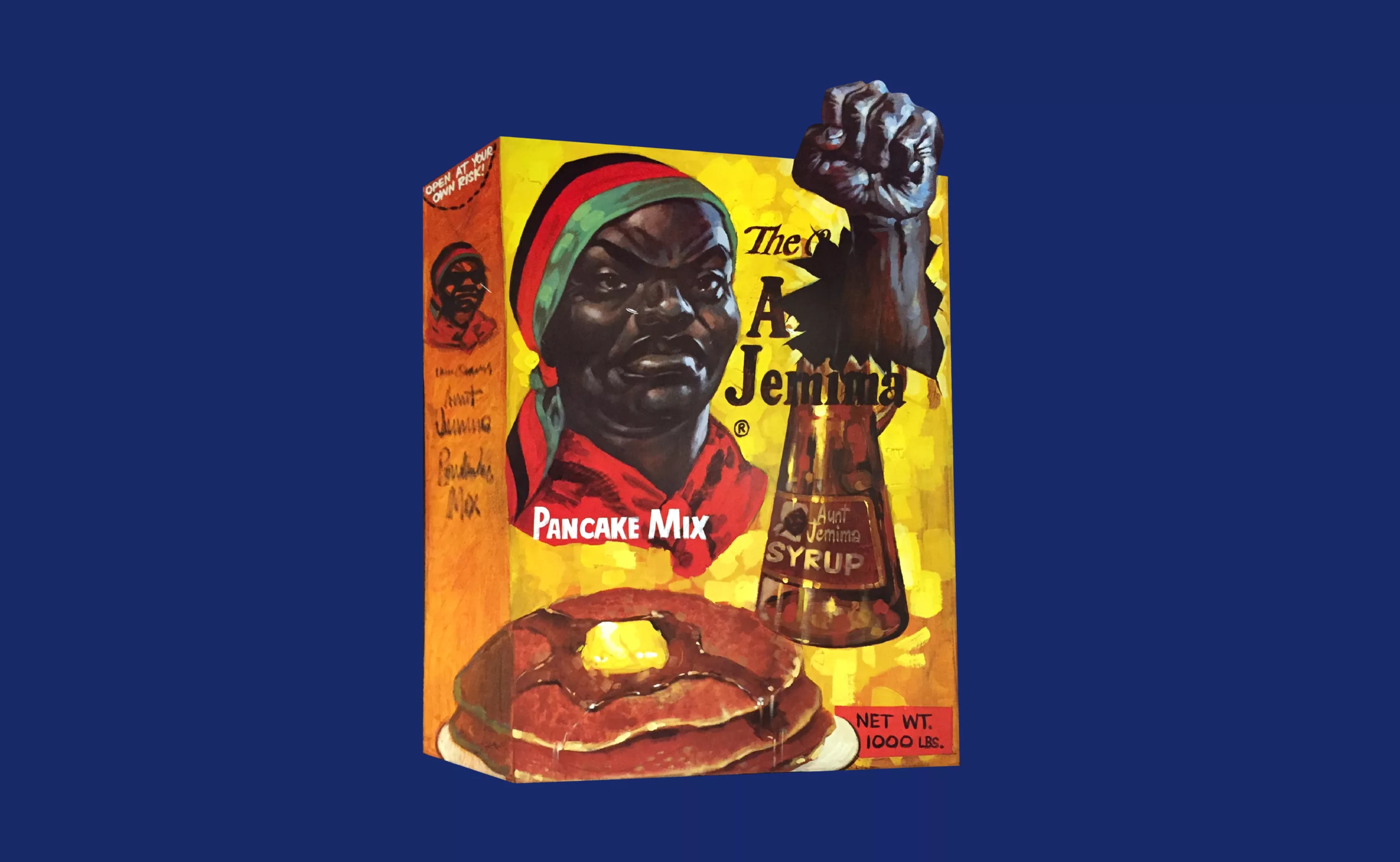
The murder of George Floyd by a white police officer was the last straw for ordinary racism in the United States. We witnessed the immediate birth of the #BLACKLIVESMATTER movement online, which led to numerous questionings of white privilege, and above all a call for awareness and action. It is in this hot context that four American brands – such as Aunt Jemima or Uncle Ben’s – have recently decided to get rid of logos and names imbued with racial stereotypes.
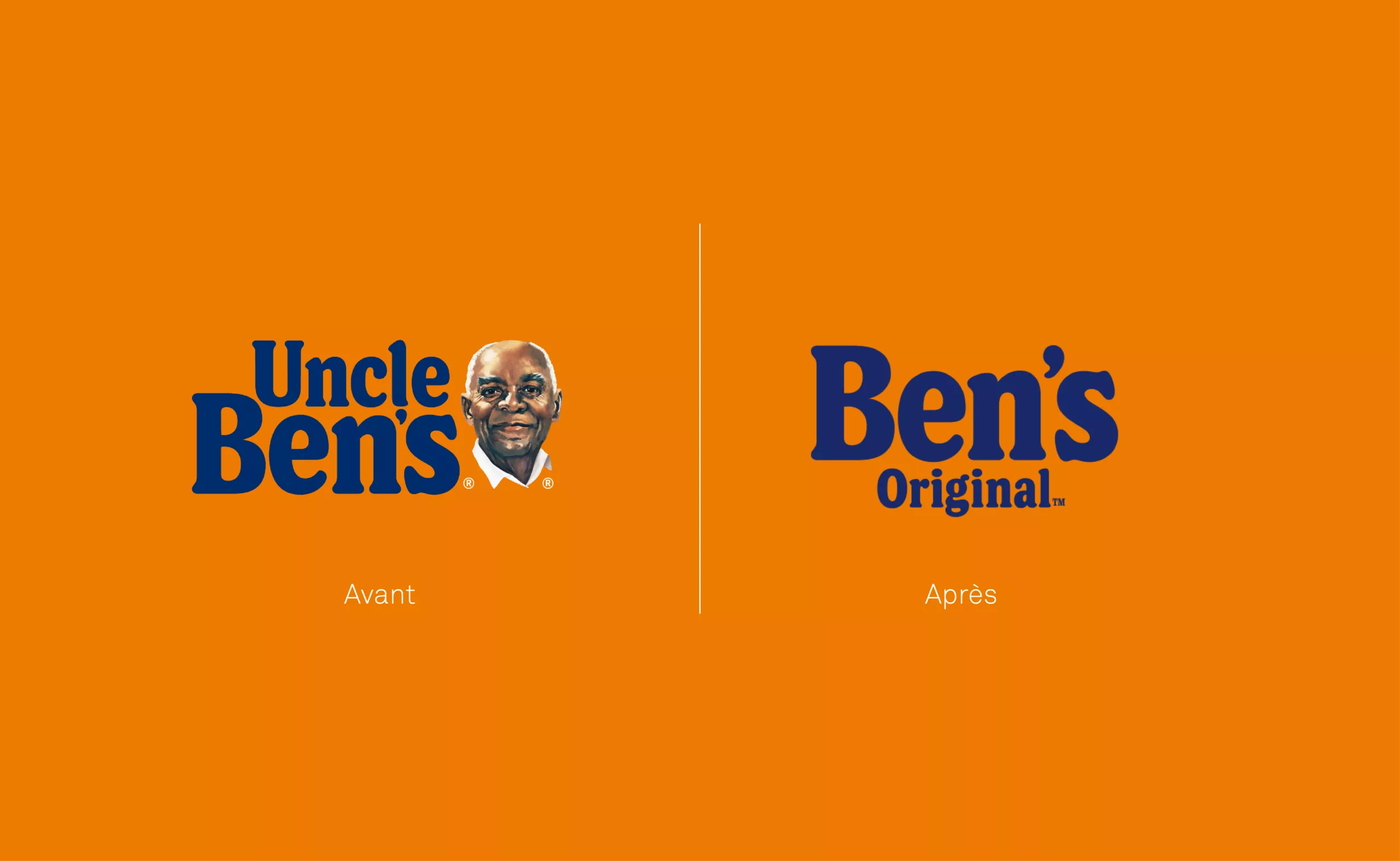
Racist branding
When reading French comments on the articles announcing these changes, one realizes that these stereotypes are not frankly understood on this side of the ocean. We can read for example: “How can “uncle ben’s” be considered “racist”? Frankly, it’s getting out of hand” or “We should just stop the bullshit in this country and realize that coffee grounds will always remain black no matter what we say or do.” And “To the critics: what about taking a deep breath and calming down, for in the end it’s just a rice brand…” Some logos are part of our everyday landscape and seem at first glance “normal” and anything but scandalous. They actually have a very heavy past and carry racist stereotypes that shouldn’t even exist anymore.
The Quaker Oats brand (PepsiCo), known for its oatmeal, recently announced that it will be redesigning the packaging and brand name of Aunt Jemima instant pancake mix (not sold in France) accused of racism. Quaker said the brand is “based on a racial stereotype” and that they want to “take a step towards racial equality”. A few hours later, Uncle Ben’s (Mars) confirmed that they wanted to change their name and brand image, followed by Mrs Butterworth’s (Conagre) syrups and Cream of Wheat (B&G). Four brands in total in just a few days, something never seen before in the branding landscape.
Let’s start by taking a big step backwards and explain why.
Brand names, pure as the driven snow?
Created in 1889 by Chris Rutt and Charles Underwood, the Aunt Jemima logo is one of the oldest in the United States and one of the oldest trademarks in the world. Unfortunately, its history is far from glorious. The instant pancake powder takes its name from the song “old Aunt Jemima” by black artist Billy Kersands, in 1875, originally sung by slaves. Aunt Jemima was a hit in “minstrel shows,” extremely popular racist shows to which Rutt attended, where white men with black painted faces (blackfaces) ridiculed black people.
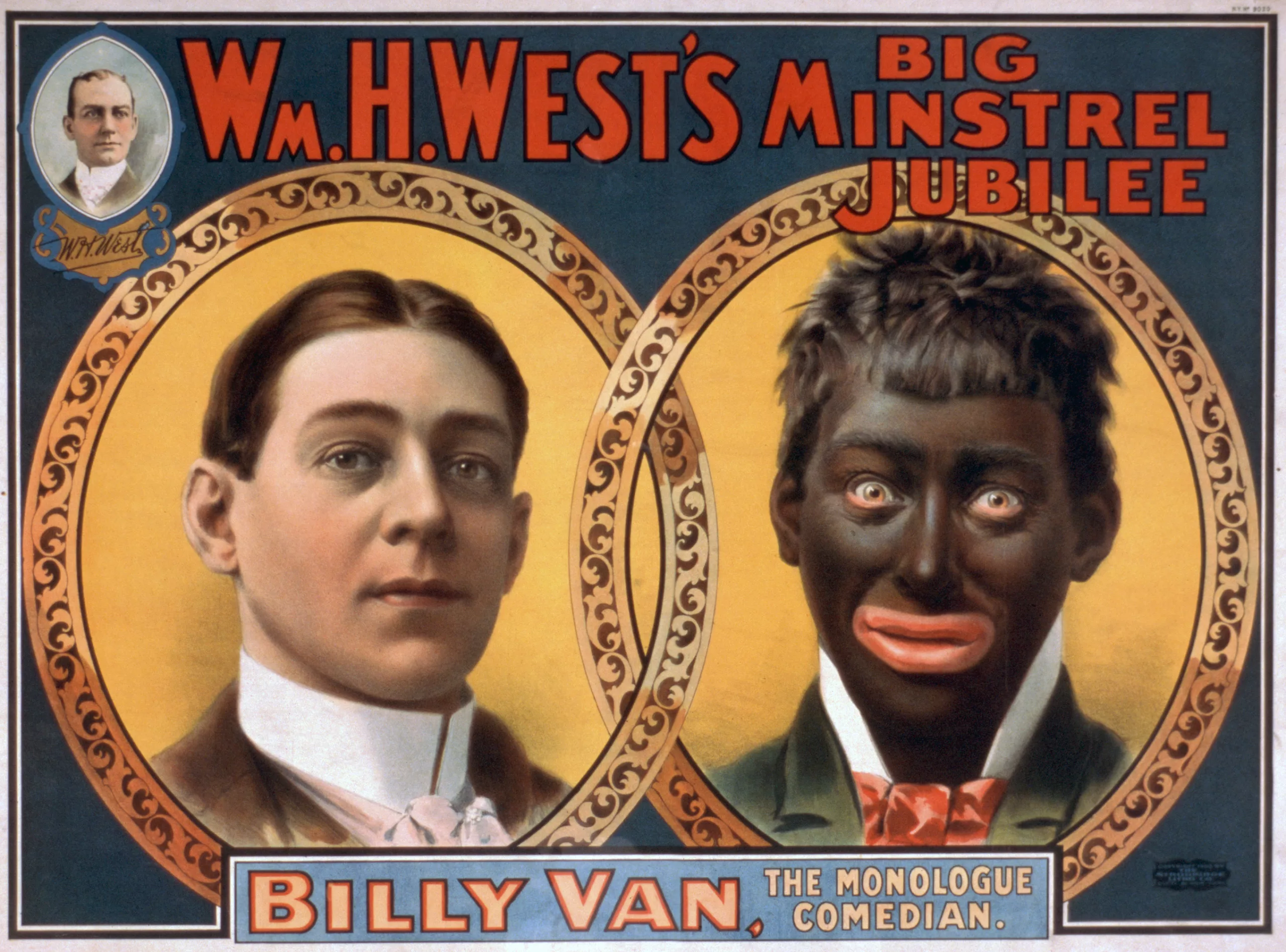
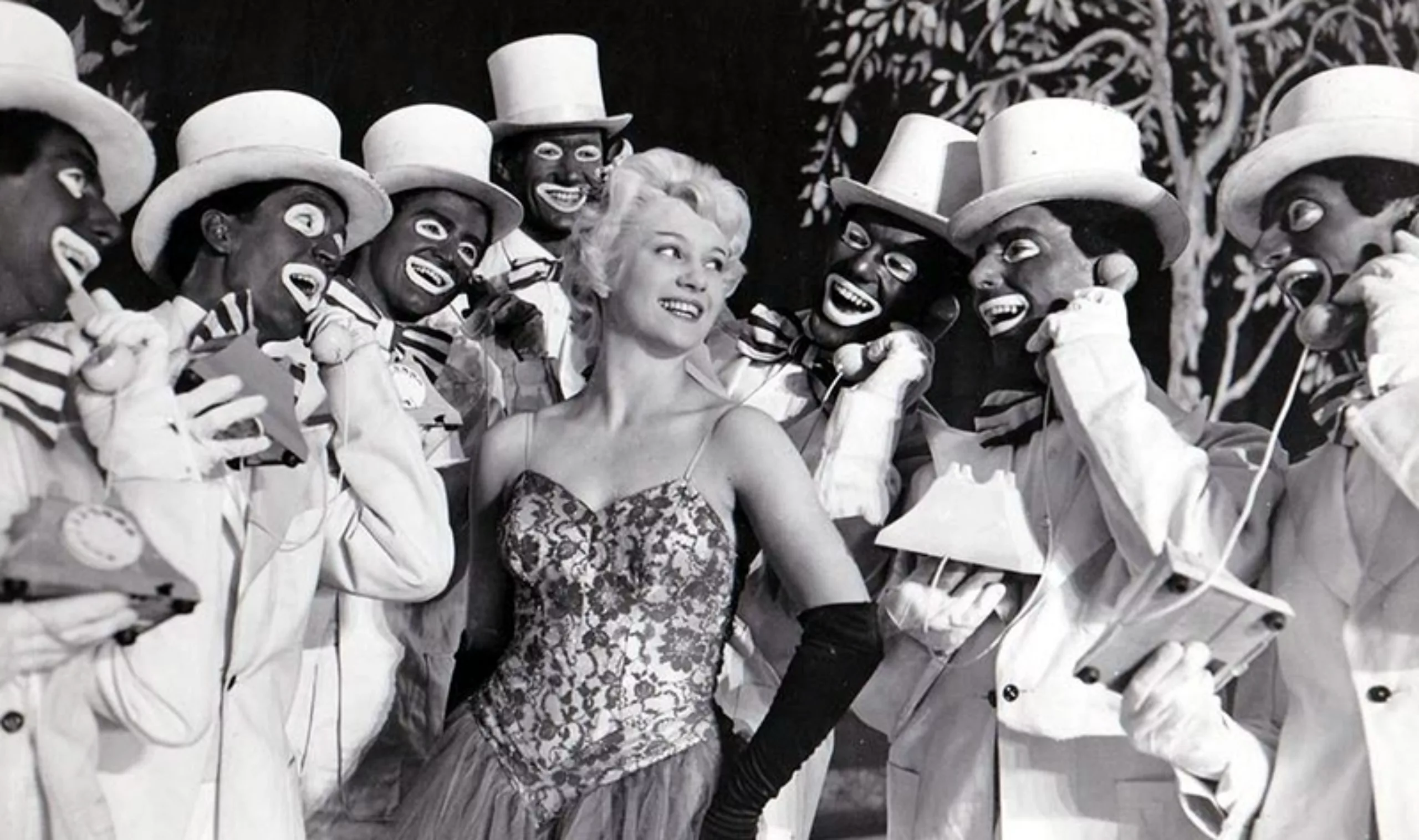
The minstrel shows often told of the misfortunes of Rastus, a pejorative and racist name given to the effigy of Cream of Wheat, an instant cereal powder that also makes waves today. The brand claims, however, that a real person is hiding behind Rastus’ face -without knowing his identity though. He was “probably the cook Franck L. White”, buried without any inscription on his tombstone. Nonetheless the first advertisements -which do not appear on their website– are quite clear in terms of brand positioning:
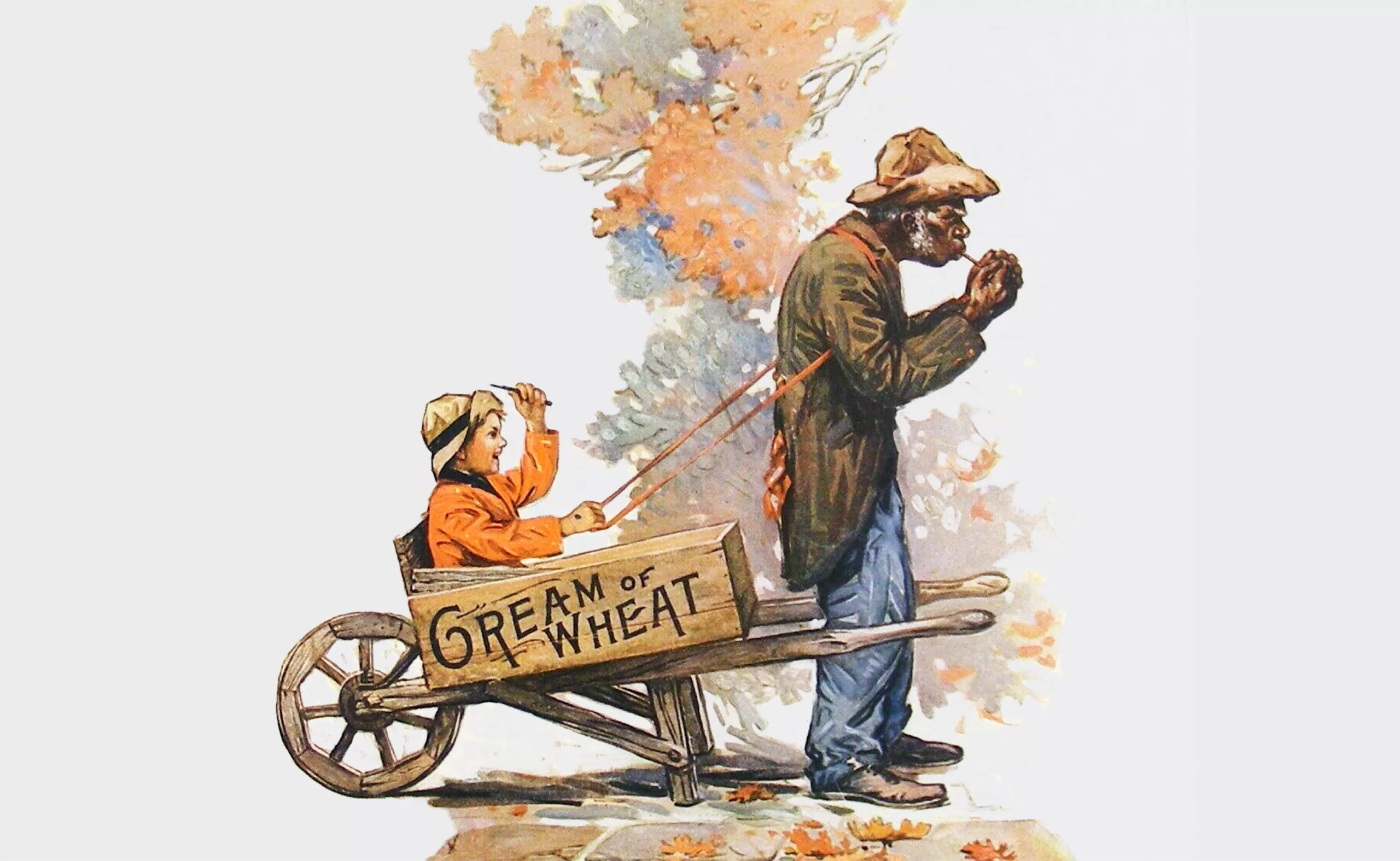
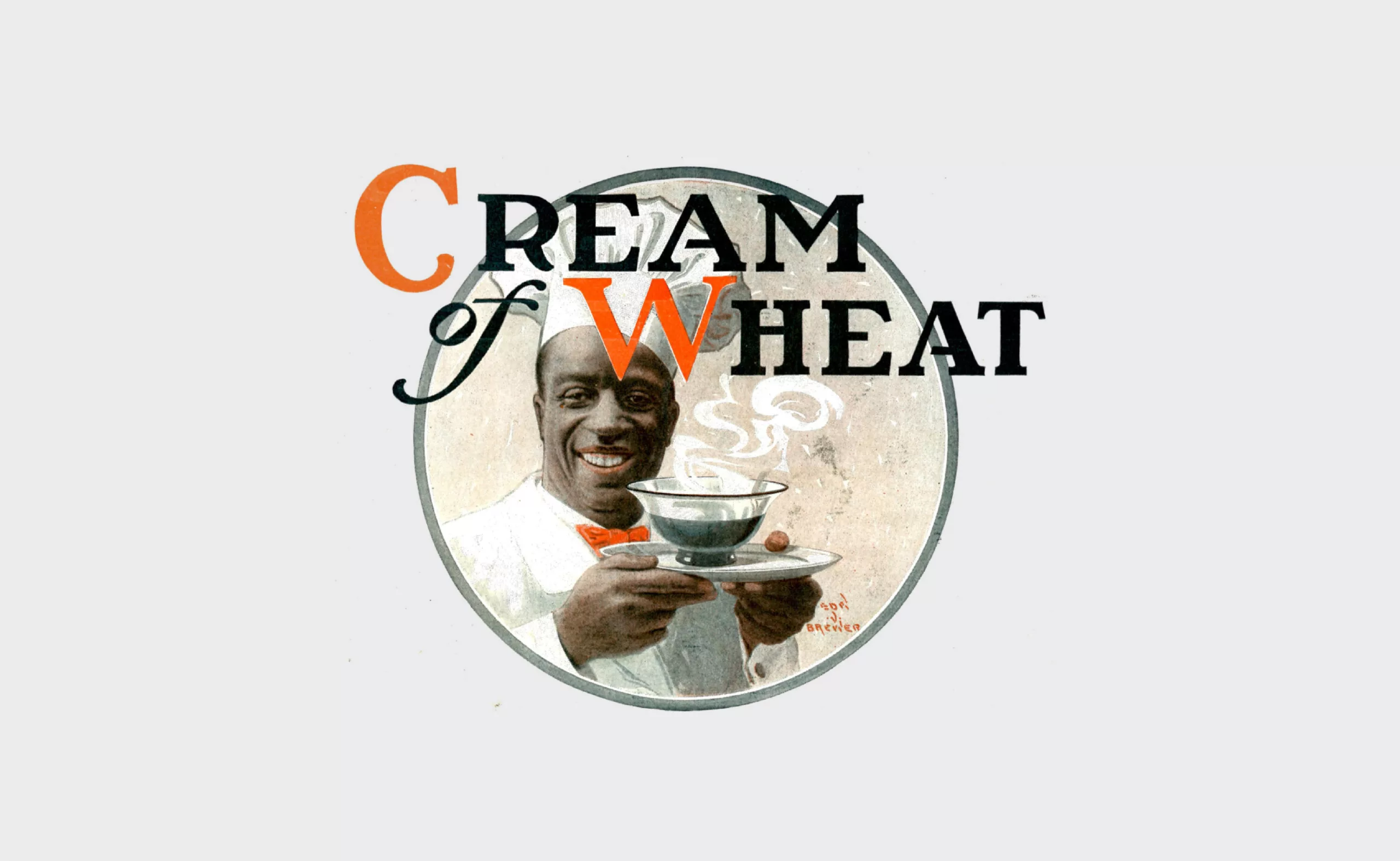
And did you know that “aunt” or “uncle” (in Uncle Ben’s), was a simplistic way of calling slaves without having to use the terms “madam” or “sir”? This explains why Aunt Jemima or Uncle Ben’s are nowadays controversial in their brand name, which is racist. Although Uncle Ben’s claims to have been inspired by a famous black Texan rice farmer, Uncle Ben, and the face of Franck Brown, a famous butler, one can question the legitimacy of such a name invented in 1943 and then based on a slavery legacy.

The Mammy, trademark of racist branding
As for Aunt Jemima, she is a “mammy”, a stereotype of the southern plantations’ slaves, an “African mamma” whose master promises her freedom when she dies… but who never dies. Plump and joyful, submissive and happy to serve, her face and her silhouette are a symbol of wholesomeness and good health. A loving and caring mother. Her moniker and image are used as a logo on food packaging to increase sales. A real marketing strategy.
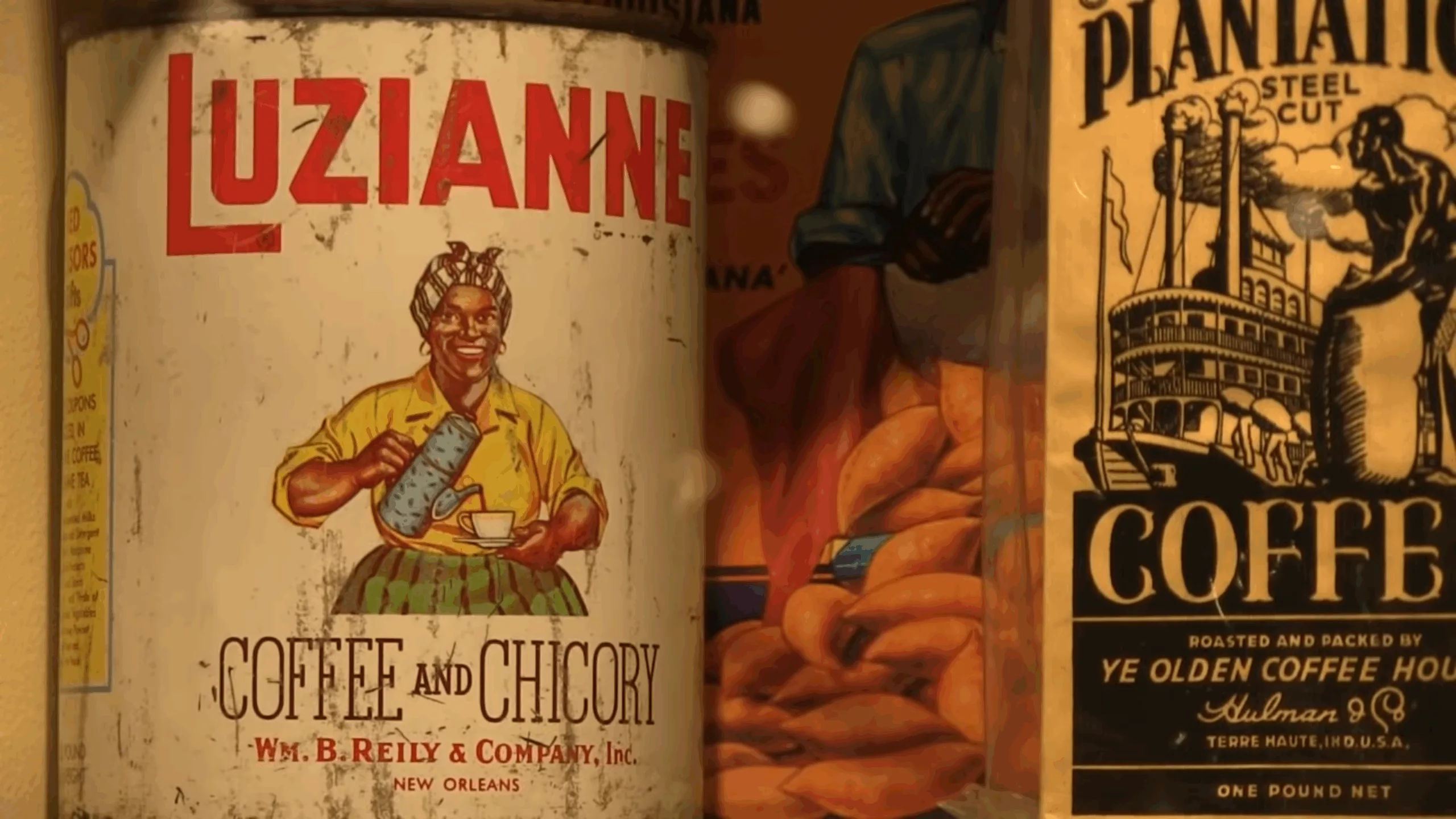
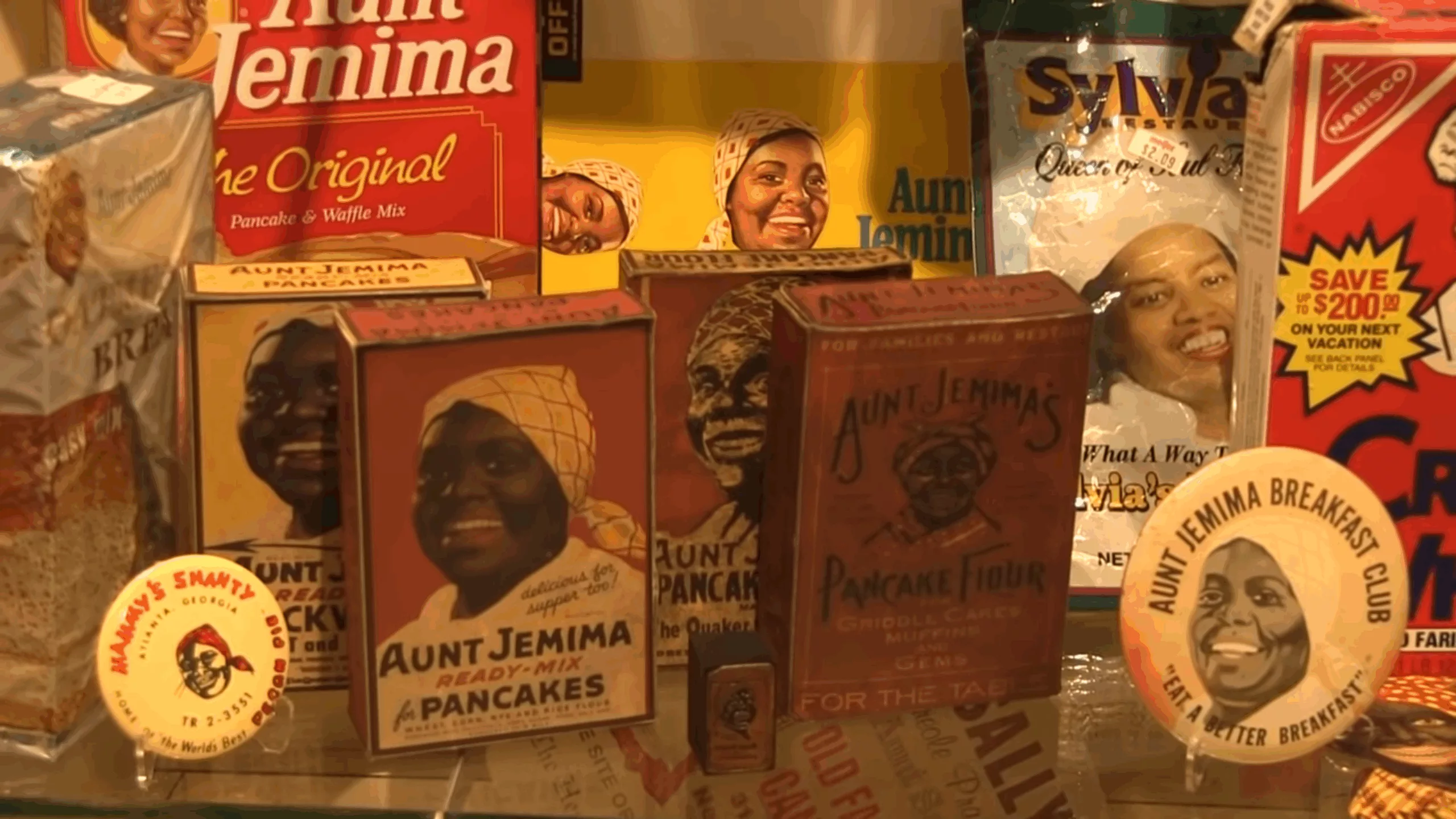

Smoothly handled branding campaign, it is necessary to bear in mind that the archetype of the Mammy was created from all sides by the Southerners and white supremacists, in order to comfort the white community regarding black slaves. Generally sexually abused, black slave women were seen as a threat for the white couples. By creating an asexual, cheerful and middle-aged caring granny, one thus skillfully stifles scandals to create a new (brand?) image that is reassuring, and perfectly false.
In 1890, the R.T. Davis Milling company -which bought Aunt Jemima from its two founders- was looking for a black woman to represent its instant pancake powder brand. Nancy Green answers the call and is hired. She’s a 56-year-old former slave working in a white man’s house as a cook. She becomes the first living person to embody a trademark. In 1893 her first contract consists in dressing-up and mimic a plantation slave to promote the famous pancake powder, bringing Mammy to life.
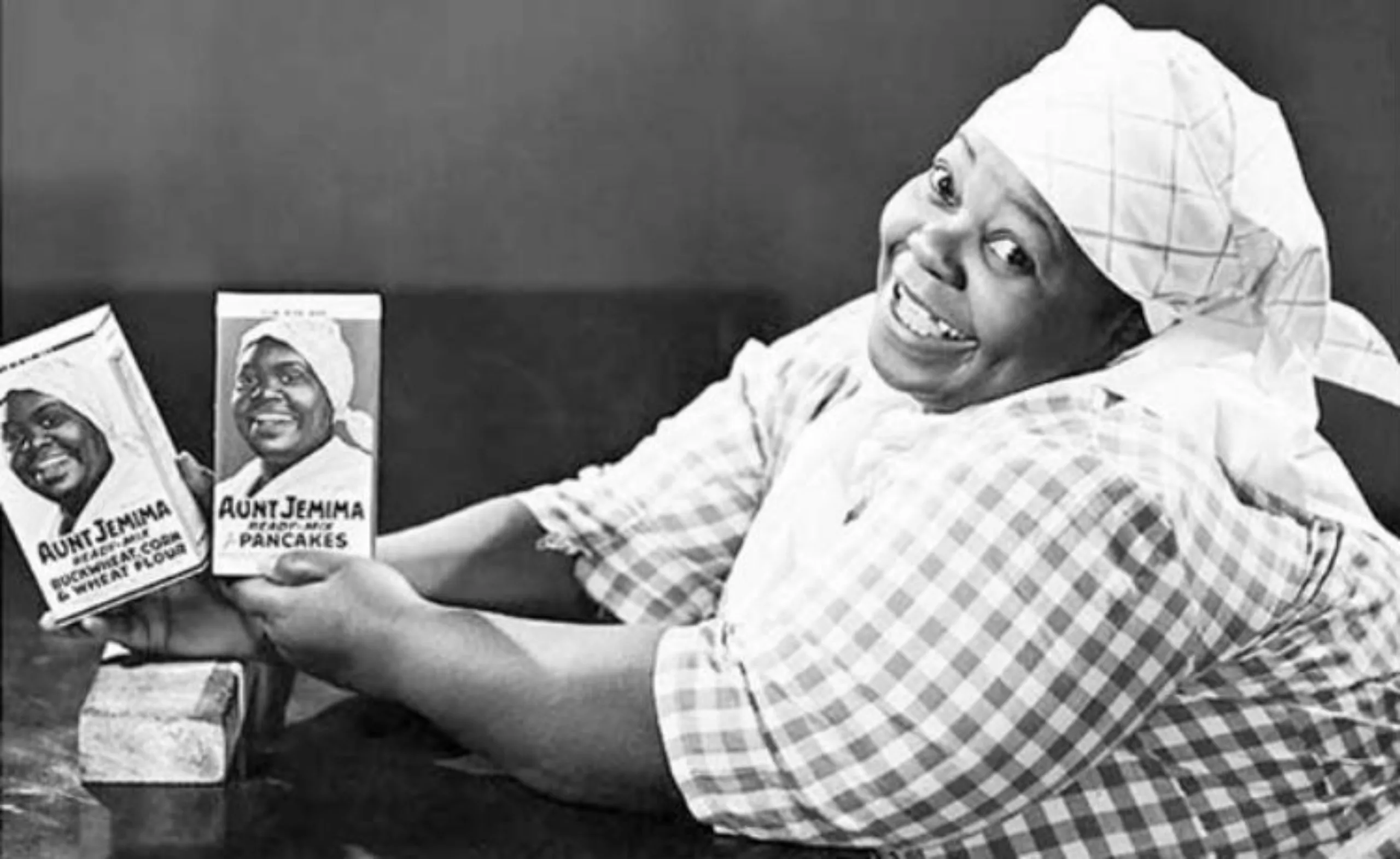
Her ” friendly and cheerful personality ” is used to boost the brand’s sales, and earns her a medal. Nevertheless, Green’s career enabled her to fight poverty in black communities and for equal rights. This video tells us more about the origin of the Aunt Jemima brand.
At that time, in the advertisements, she would be seen serving white families. She doesn’t speak well, and she always has a big joyful smile (Cf: innocence, harmlessness).
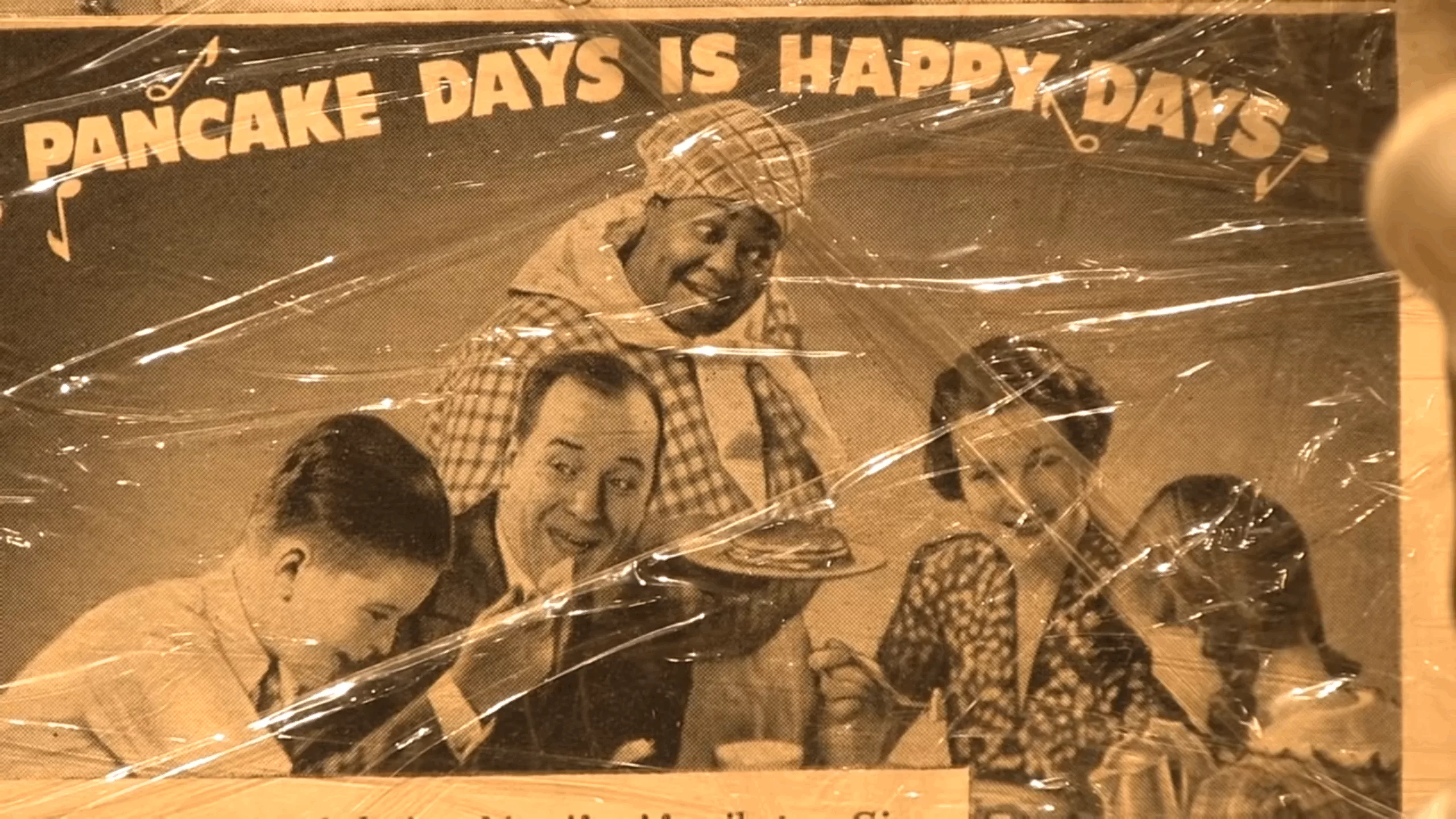


In 1925, Quaker Oats buys the brand and registers a patent for the logo. Later, after Nancy Green’s death, Aunt Jemima will be played by Aylene Lewis, Anna Robinson or Lou Blanchard in commercials and TV spots. Her image evolves, Jemima loses her slave bandana in 1968 and gets thinner over the years, to wear today earrings and a white collar.
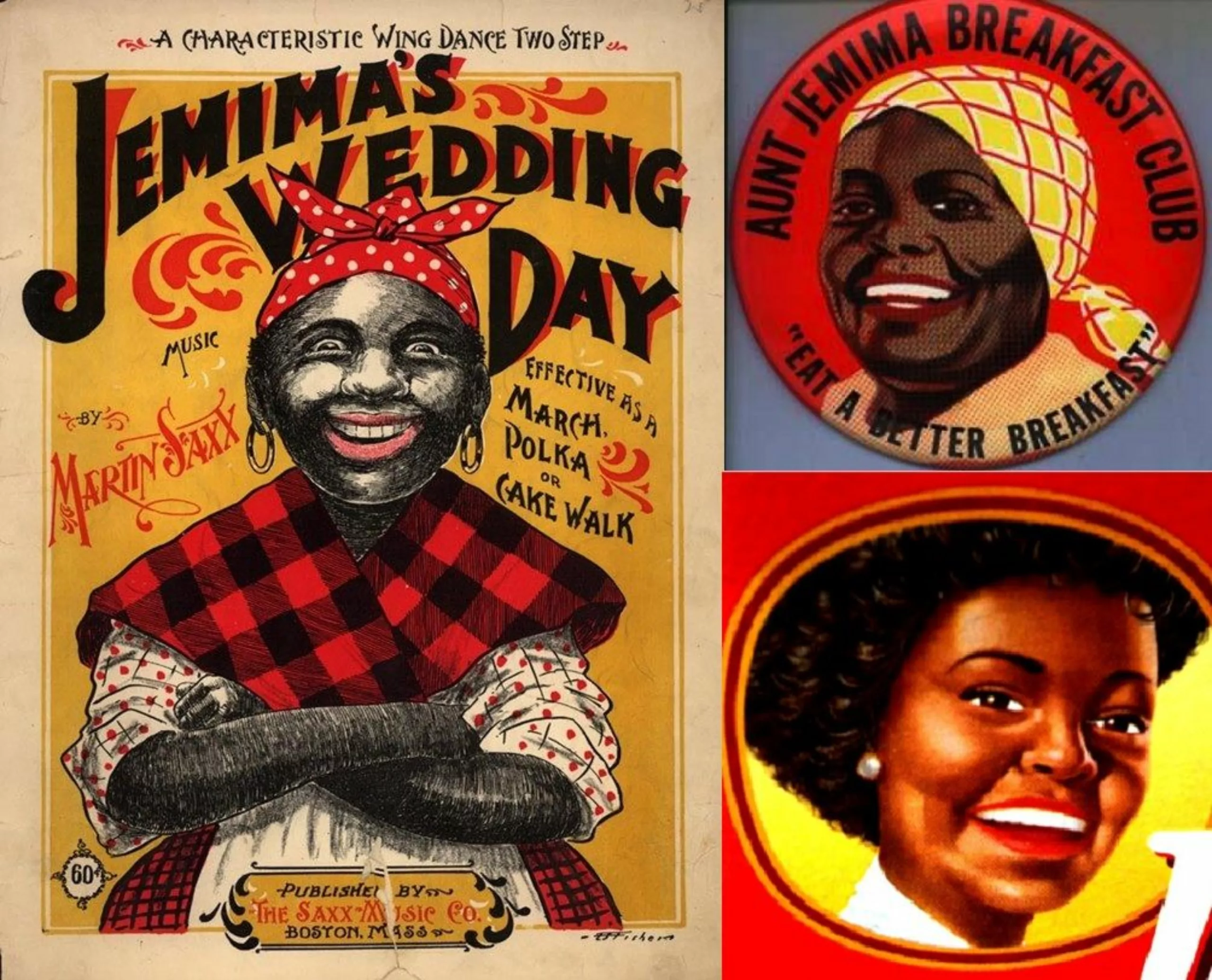
As this article is being written, Aunt Jemima is now part of history and will no longer appear on packaging as a result of the social movements we are familiar with.
A painted black story, coated with lies
What about the lack of transparency of Mrs Butterworth’s (black) syrup bottles? The parent company Conagra claims that the female shape of the bottles is supposed to represent “a loving grandmother” (that reminds me of someone) without any racial connotation. There were indeed many vintage bottles painted to illustrate a white grandmother as shown below, but sometimes Mrs Butterwort was also painted black. Gee.
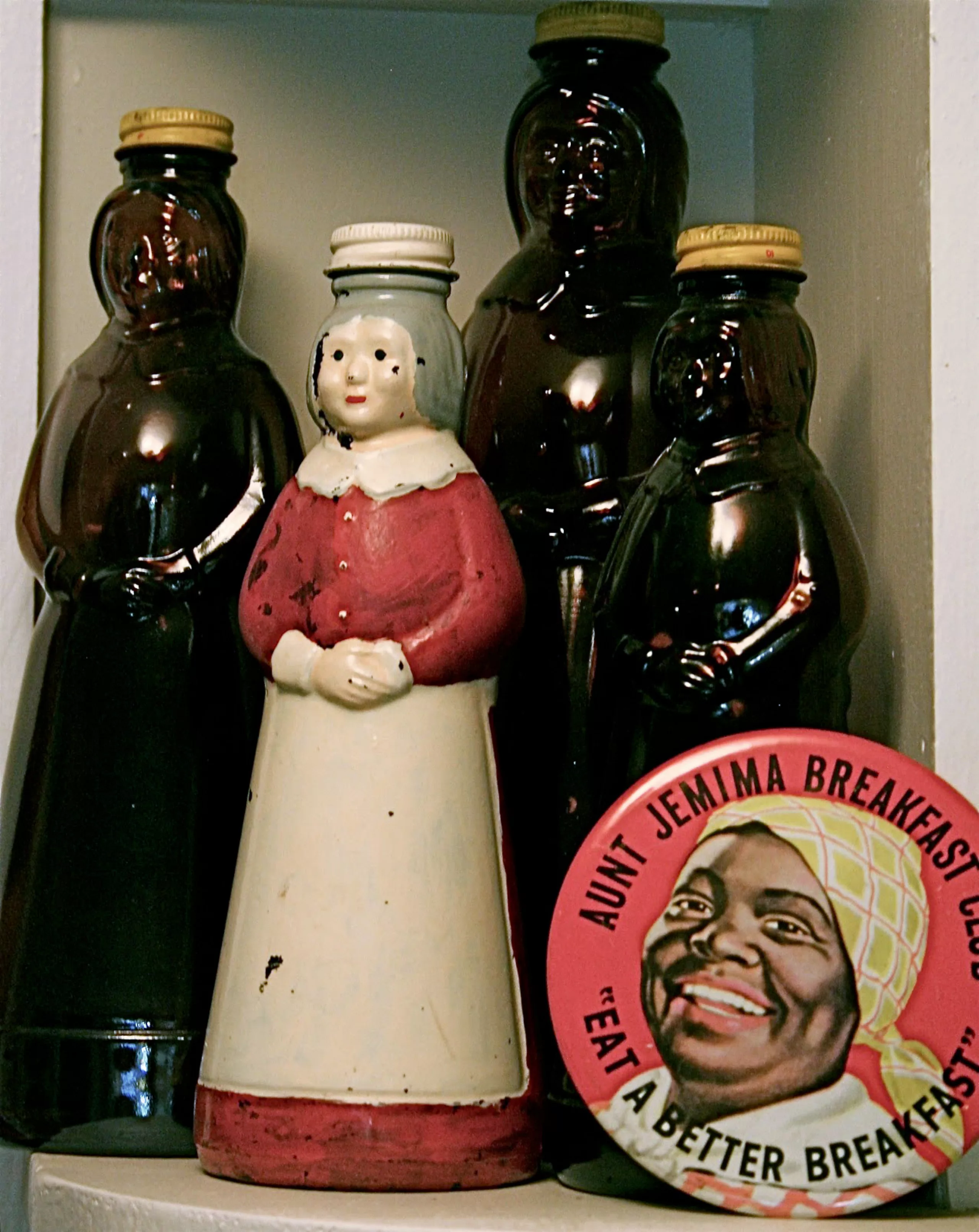
But then, why choose a transparent container revealing the color of the syrup, when it is supposed to be protected from the sun in opaque bottles? The syrup being black, one can wonder. Actually, don’t be mistaken, the company affirmed that the actress Thelma “Butterfly” McQueen is said to have inspired the bottles’ shape. In 2009, the brand launched a big contest to guess Mrs Butterworth’s first name: Joy. Funny how Joy also reminds me of someone’s quality…

McQueen, who was black, strangely played the roles of maidservant in white films (such as Prissy in “Gone with the Wind”, she was actually unable to attend the premiere because of the segregated theaters) from which she was never able to free herself. Scratching under the coating, one can see the striking resemblance between the syrup bottles and the Mammy figurines.
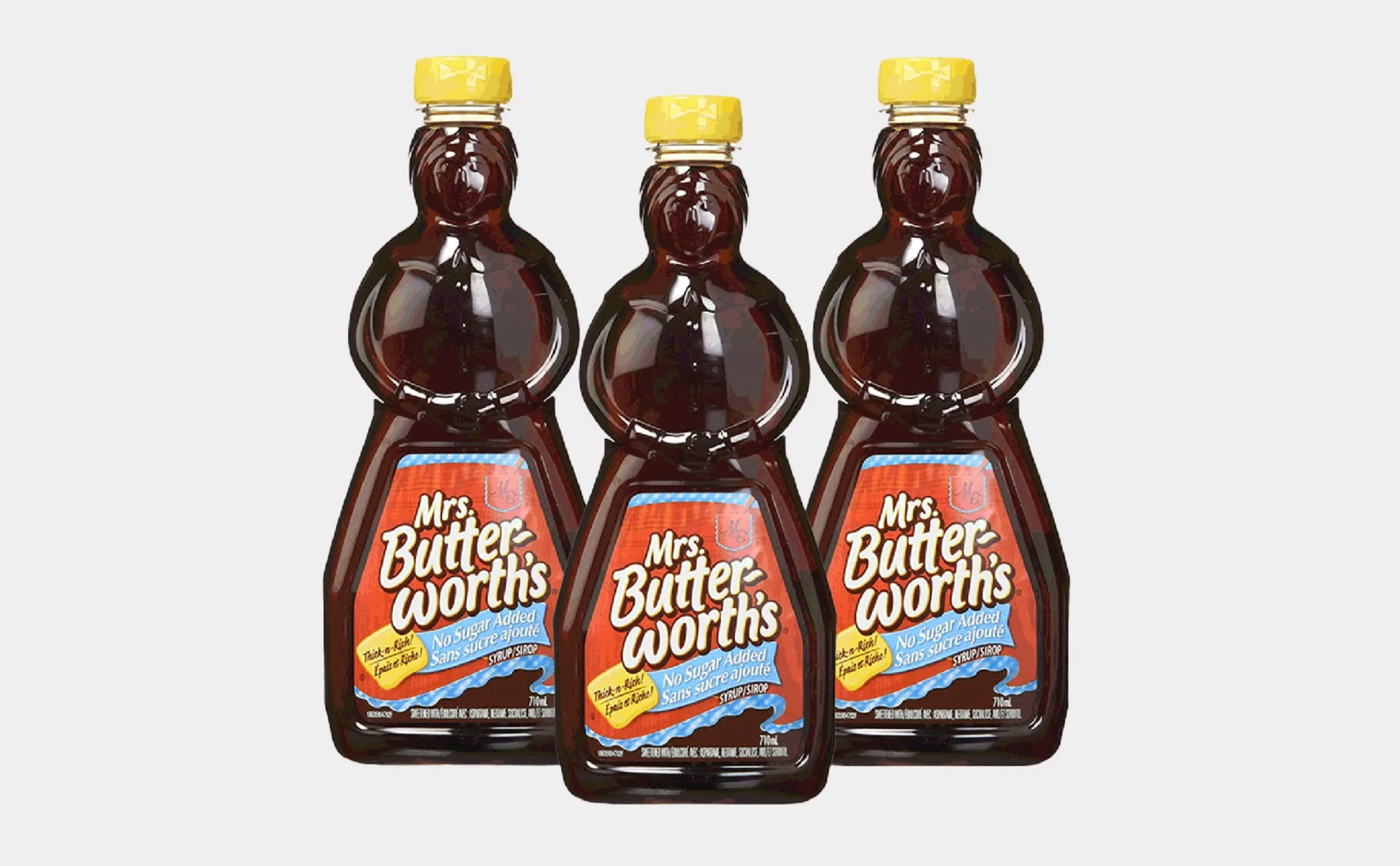
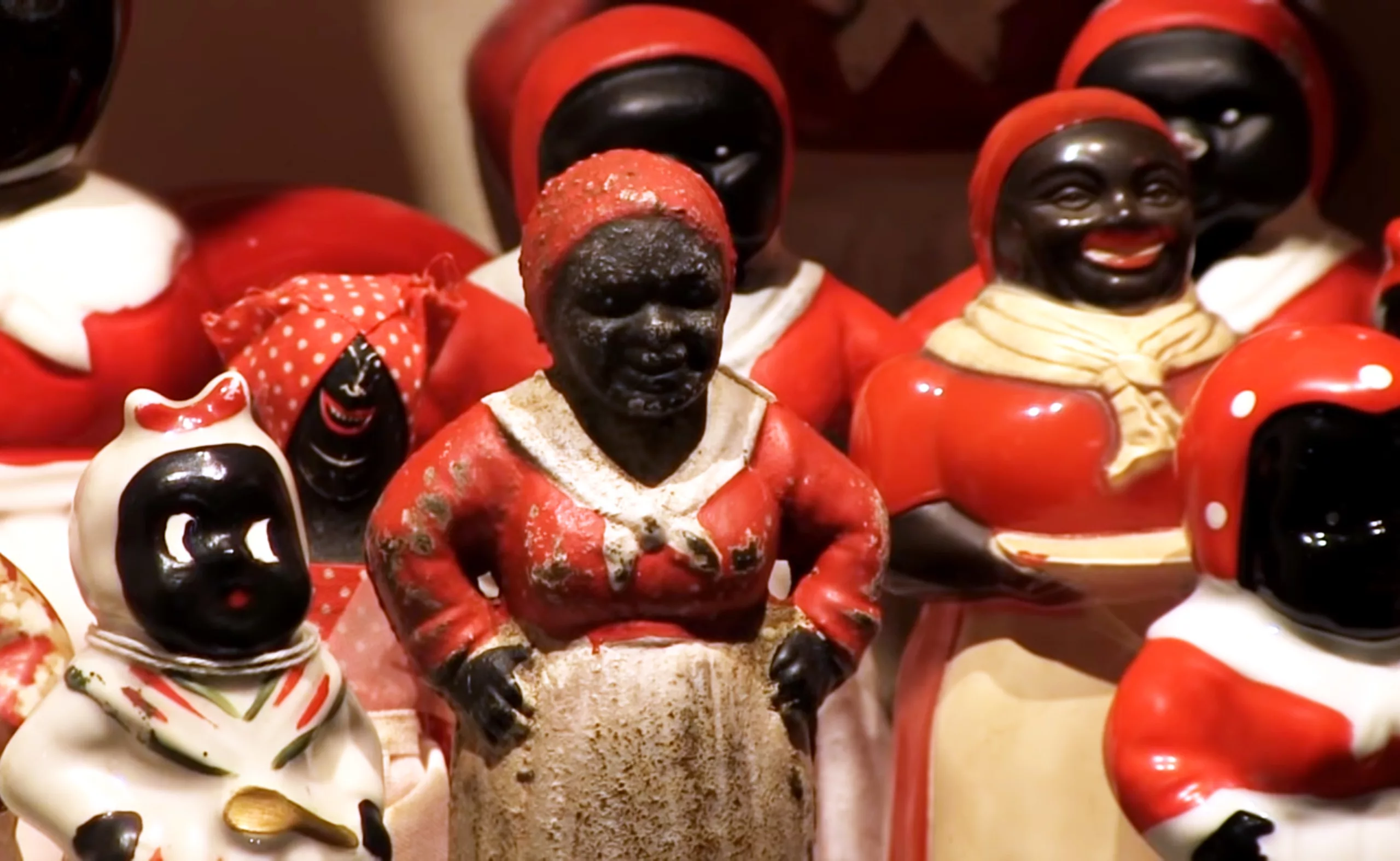
Hijacking racist packagings
In the 1960s, African-American artists decided to fight against these racist packagings and brands by creating engaged posters. In John Onye Lockard’s No More, for example, we see the figure of Aunt Jemima, anything but smiling, raising her fist in revolt as a Black Panther.

L. White depicts a middle finger raised Rastus “serving this” in the racists’ face.
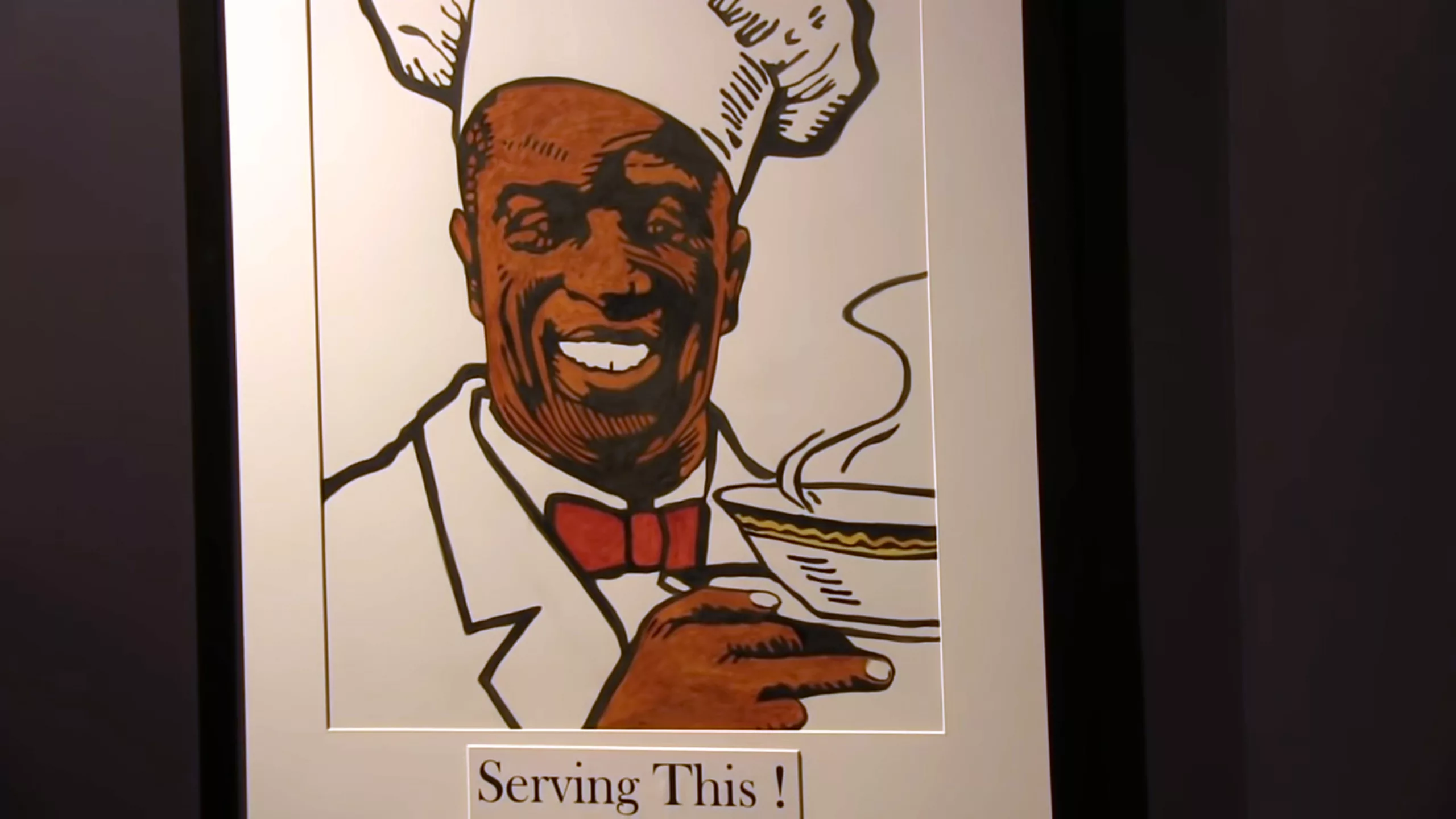
Last but not least, during Obama’s investiture, the racists were very creative. The figure of Mammy and Rastus from Cream of Wheat were hijacked featuring the face of the president. Please note the eloquent play on words consisting in changing the word wheat into buckwheat (black wheat)… accompanied by the slogan “he is ready to serve you“.
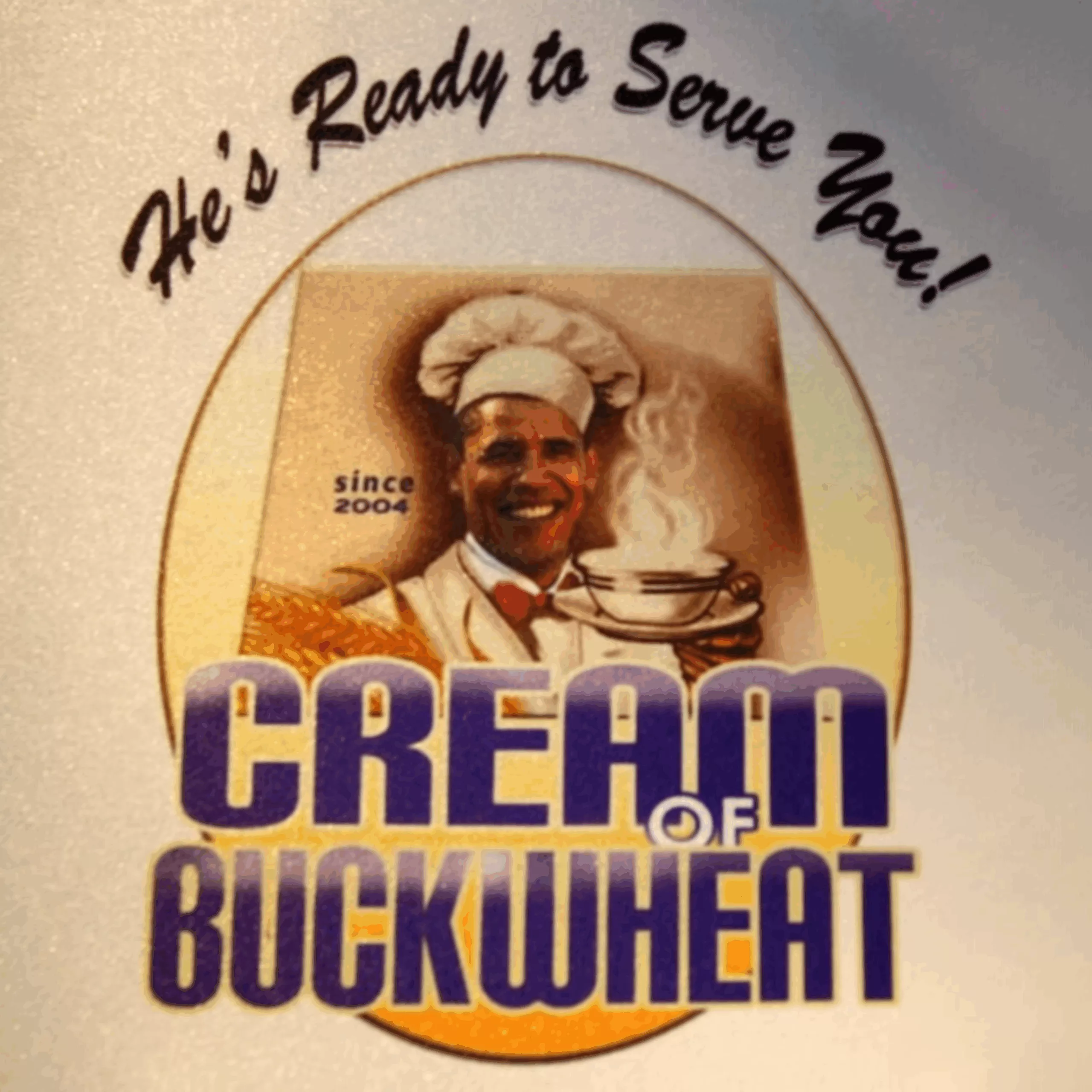
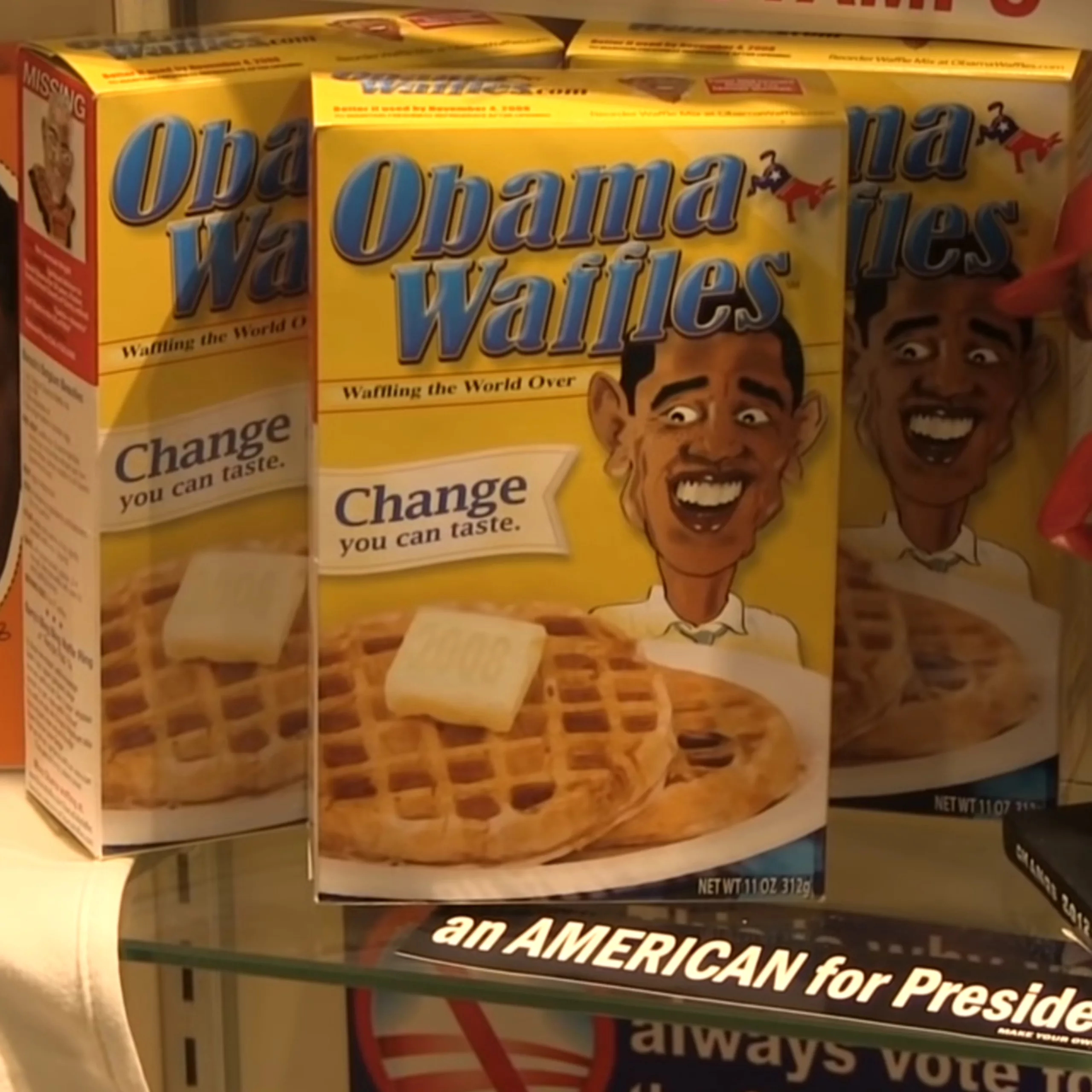
Coated in myths and stories of loving grandmothers and under cover of “real people’s faces”, these brands convey the latent idea that all these products – which are always instant products supposed to help housewives – will offer good and loyal service to the user. Like slaves at the time, raised to the rank of “friendly effigy”, after six decades of servitude. These packagings carry a form of post-slavery nostalgia, heavy and stincky, attaching black men and women to new chains: these of continuing to serve, on visual support. It is therefore high time to dust off these forms of branding.
In Europe too, racist brands…
While the news focus on the history of specific American racist brands, this topic goes far beyond the borders, leading many brands to review their history and marketing strategy. France, with its colonial history, has nothing to envy to the Americans. Let’s take a look at some closer examples…
Danish ice-cream makers divided over the « Eskimos »
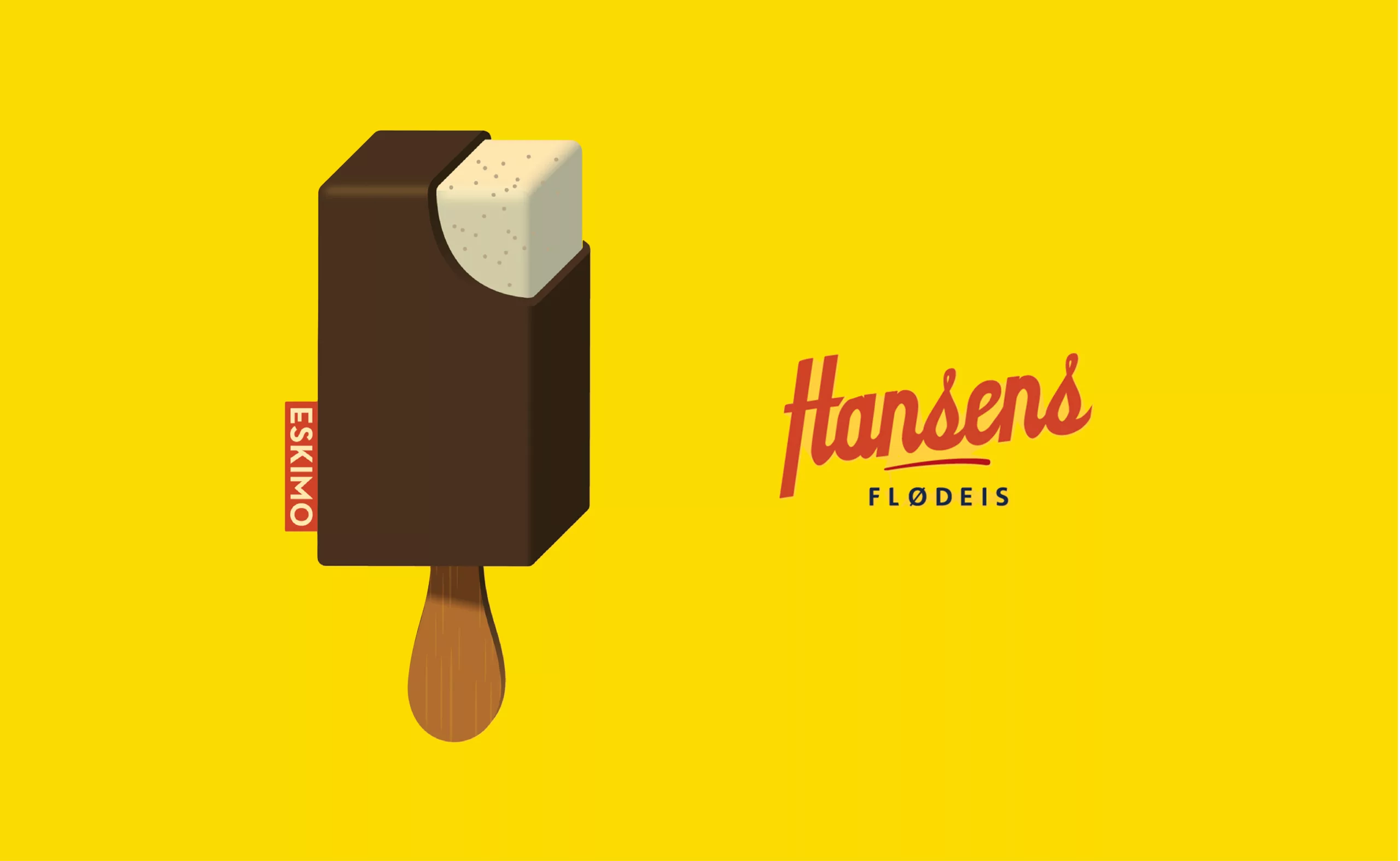
Mid-July, the Danish glacier Hansens Is, said it wanted to abandon the name “eskimo” for its products, considering that the term reminds the Inuit and other Arctic peoples of “a history of humiliation and unfair treatment. Aaja Chemnitz Larsen, one of the two women MPs representing Greenland in the Danish Parliament, welcomed the decision, pointing out that the term, which means “eater of raw meat” – although the etymology is subject of debate among linguists – is pejorative to many Greenlanders.
Banania, a racist branding case in France
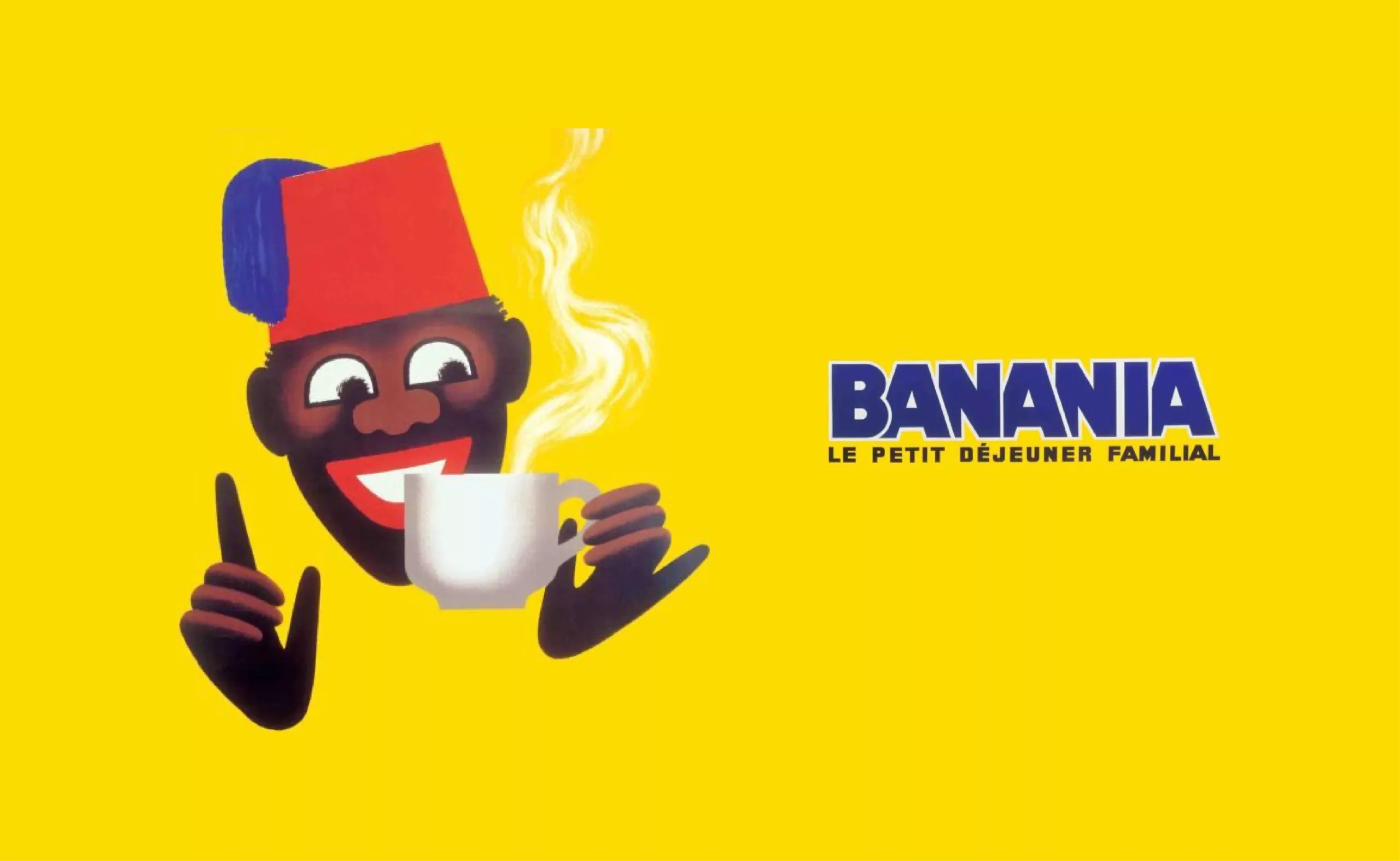
The website Histoire-Image.org tells us that the Banania brand, created in 1914, seeks to turn its cocoa and added banana flour into a patriotic product. the brand uses the image of a hilarious Senegalese infantyman with the “Y’a bon” slogan, a basic French term to say “tastin’ good”.
However, this image is more than just another racist advertisement, which explains its remarkable longevity. “Negro” laughter and the expression “y’a bon” were the distinctive signs of the Banania brand until 2010. This success was for a long time due to the political necessity to minimize the participation of the riflemen in the war (and thus to avoid paying excessive war pensions!).
Assimilating them to children serves this meaning, “Africans are like children”, a paternalistic and condescending vision. Thus, the brave babbling Senegalese chocolate-loving infantryman becomes the alibi for an implicit racialization of French society, which is getting used to relying on the reinforcement of soldiers or colonial workers as if it were theirs. Hence the need, affirmed as early as 1948 by Léopold Sédar Senghor in black Hosties, to “tear banana laughter to shreds on all the walls of France”.
It was not until 2011 that justice demanded the withdrawal of the slogan “Y’a bon!” Since then, the brand has reviewed its image, without really erasing its fundamentals. The “Y’a bon” has discreetly transformed itself into “Le bon déjeuner… ” but the childish infantryman is still there.
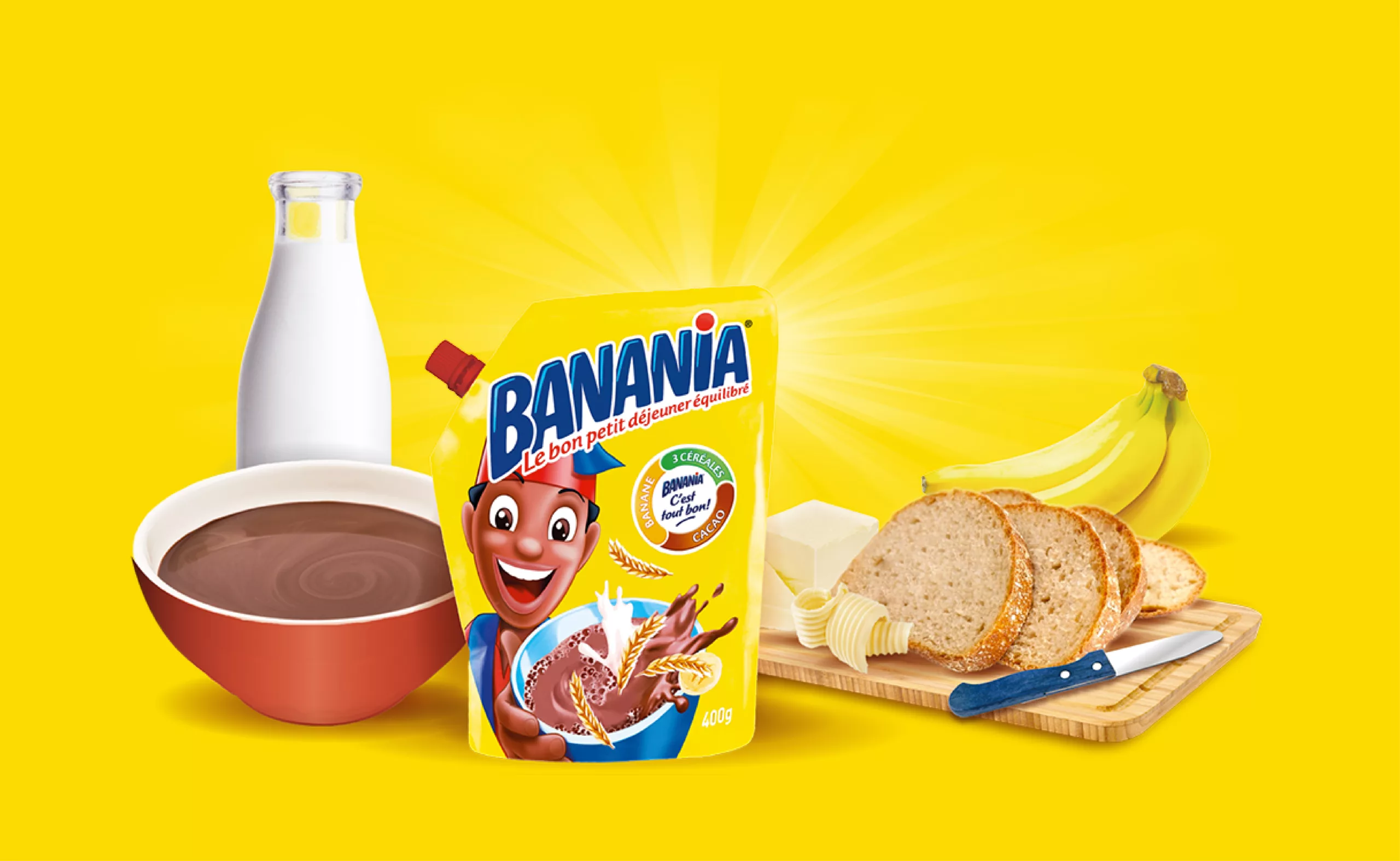
Bamboula makes some noise
Twenty-five years ago, the Saint-Michel brand had to remove the “Bamboula” chocolate cookies from its shelves following the “Village Bamboula” scandal, a zoo opened in Nantes the same year. It was a human zoo! The idea was to reconstruct an Ivory Coast village with “extras” in traditional dress. These “extras” had been recruited and were required by contract to be shirtless when the weather permitted … Women as well as men, of course. An abomination that led to complaints of violation of human dignity. The controversy resulted in the removal of the Bamboula cookies and the Bamboula boy.
The name bamboula alone, however, carries a whole racist system of representation. Bamboula is a dance whose name comes from the name of a traditional drum. But by extension bamboula, in slang, has a racist connotation similar to the term “nigger”. Can you believe that all the children of the 90’s were lulled to the sound of Bamboula commercials?
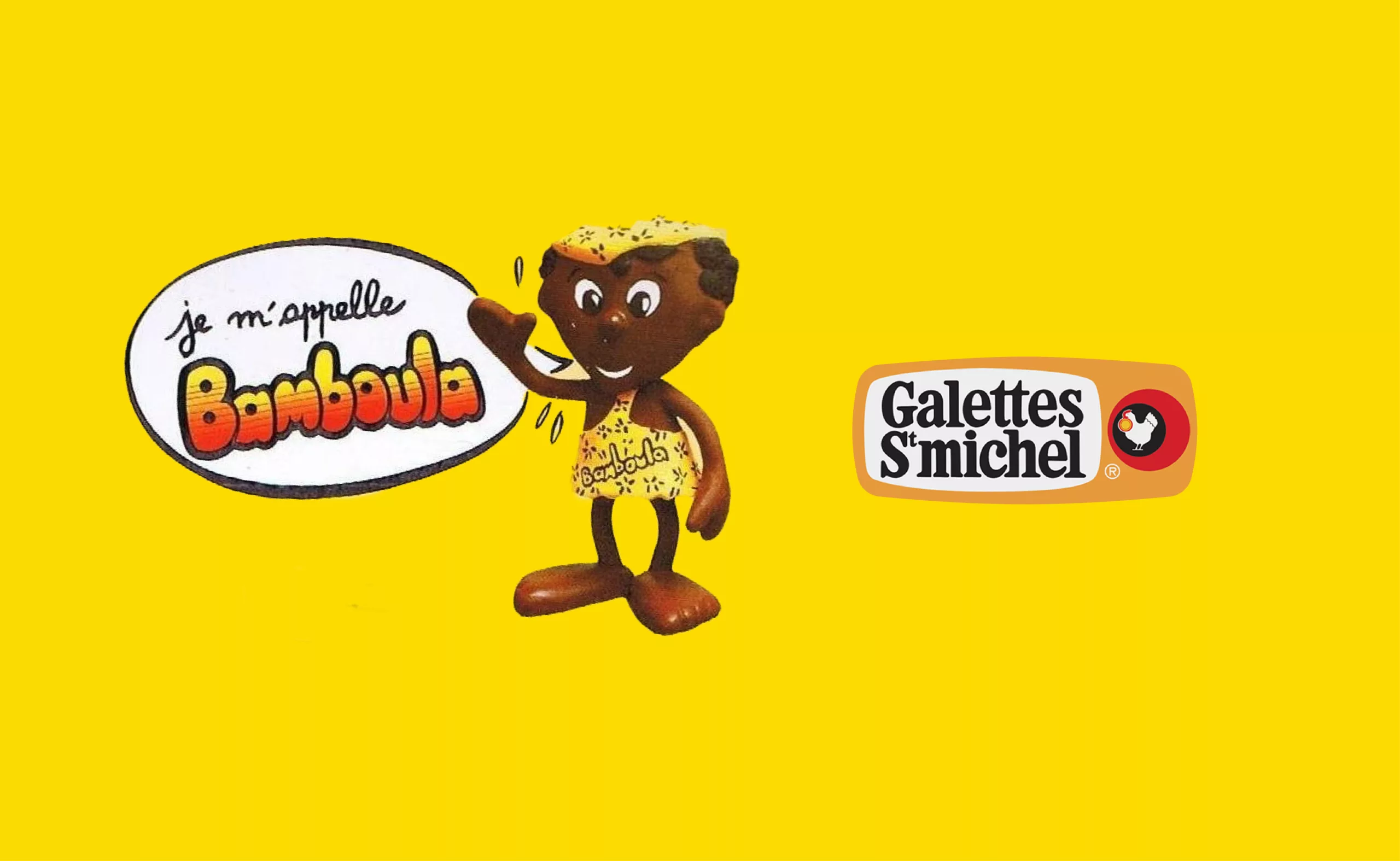
« Diversity washing »
Nike, Adidas, Disney, Netflix, Yorkshire Tea, Uber, Unilever… endless is the list of brands that have shown their online support for the Black Lives Matter movement. At first glance, taking a stand on this type of subject may seem necessary in order to remain aligned with the values of its customers and to reinforce the feeling of loyalty. However, most of the time, this type of approach is perceived as newsjacking, a marketing technique that consists in seizing a media subject in order to go with the flow. In the case of Black Lives Matter, we can talk about Diversity Washing, reclaiming a societal subject for commercial purposes.
But no one is fooled by the fact that most of the time it is a façade commitment, “against the flow of many of the rights violated by these multinationals”: “Nike, for example, exploits Uighur workers who are persecuted by the Chinese regime (…). Amazon neglects workers’ rights and the environment (…). Apple uses children to extract cobalt from mines in the Democratic Republic of Congo. »
Acording to marketing specialist Mark Ritson, the anti-racist commitment of these large companies is, in any case, immediately discredited by the simple lack of diversity in their head of management. The board of directors of all these companies is utterly white. According to Ritson, brands need to sweep their own doorstep before they can make a sanctimonious speech on social networks. “Do what I say, not what I do”.
Racism is typically a systemic problem that needs to be addressed relentlessly, on a daily basis, not just when a tragic event hits the headlines.
Let’s be more vigilant and take a step back.
Further links:
- Jim Crow Museum on afro-american racist history
- Black Excellence, media on black community
- If ‘Black Lives Matter’ to brands, where are your black board members? by Mark Ritson

